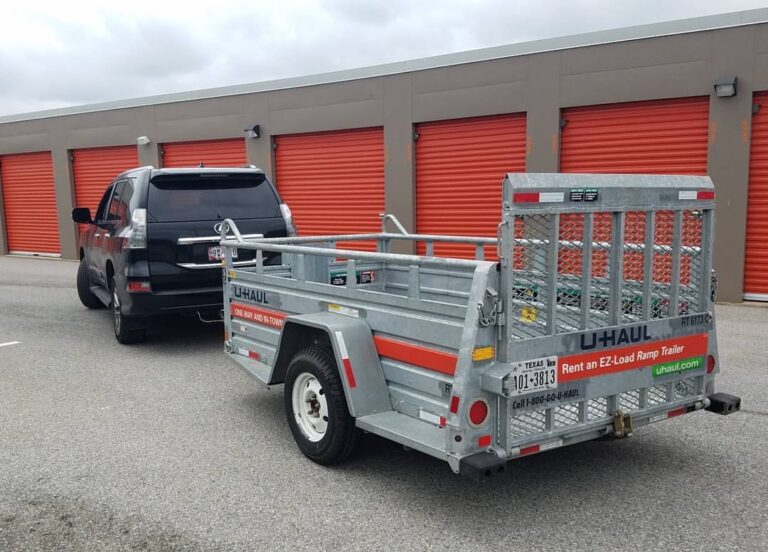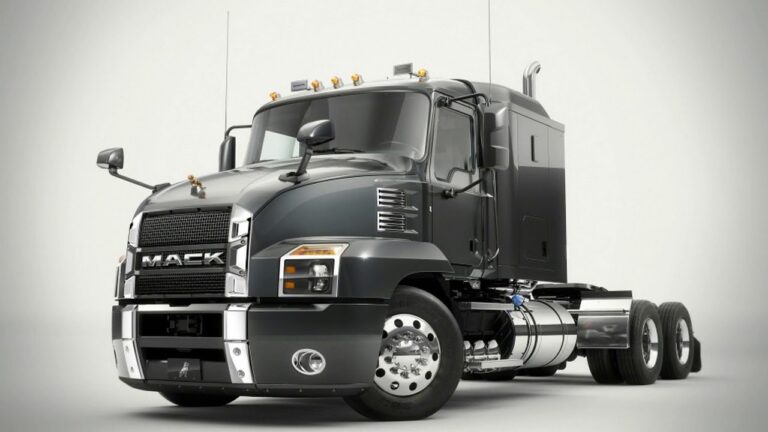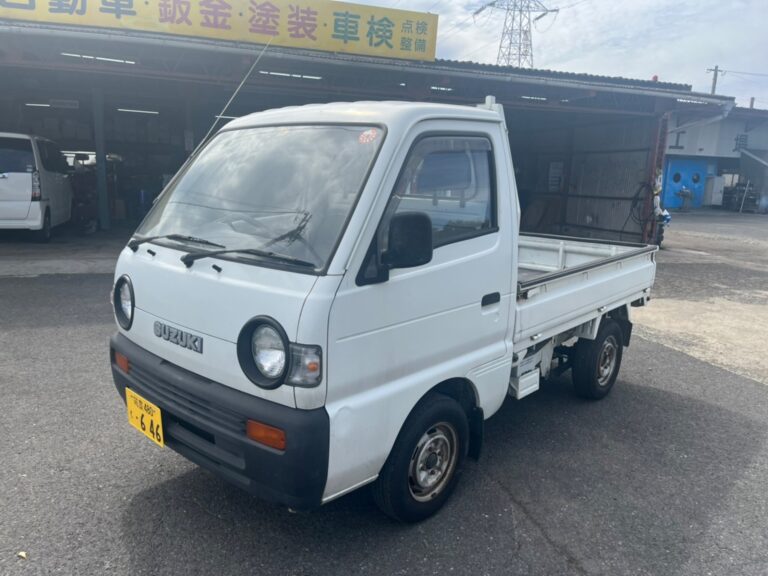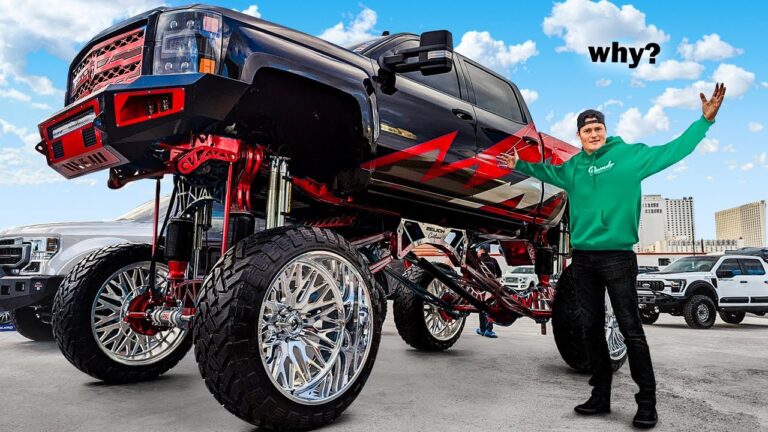How Wide Are Truck Caps For Full Size Bed Trucks: A Comprehensive Guide
How Wide Are Truck Caps For Full Size Bed Trucks: A Comprehensive Guide cars.truckstrend.com
Truck caps, also known as truck toppers or camper shells, are invaluable accessories for full-size pickup trucks, transforming an open bed into a secure, weather-protected, and highly versatile cargo space. From safeguarding tools and equipment to providing a cozy shelter for camping adventures, their utility is undeniable. However, the single most critical dimension for a proper fit, optimal performance, and aesthetic appeal is the width of the truck cap. Unlike a "one-size-fits-all" accessory, the width of a truck cap must be precisely matched to the specific dimensions of your full-size truck bed. Understanding "How Wide Are Truck Caps For Full Size Bed Trucks" isn’t just about knowing a number; it’s about ensuring a perfect seal, maximum security, and a seamless integration with your vehicle.
This comprehensive guide will delve deep into the intricacies of truck cap widths for full-size beds, explaining why this dimension is paramount, how to accurately measure your truck, what typical widths to expect, and the factors that influence these measurements.
How Wide Are Truck Caps For Full Size Bed Trucks: A Comprehensive Guide
Understanding Full-Size Truck Bed Dimensions: The Foundation of Cap Width
Before we can discuss truck cap widths, it’s essential to grasp that "full-size" trucks are not universally identical in their bed dimensions. While they fall into a general category (e.g., half-ton, three-quarter-ton, one-ton), the exact measurements of their beds, particularly the width, vary significantly between manufacturers, models, and even different model years.
Major truck manufacturers like Ford (F-150, Super Duty), Chevrolet (Silverado), GMC (Sierra), Ram (1500, 2500, 3500), Toyota (Tundra), and Nissan (Titan) all design their truck beds with unique specifications. When it comes to fitting a truck cap, the crucial measurement is the outside width of the bed rails. This is where the cap will rest and be clamped down. While the "inside" bed width is relevant for cargo, the cap’s fit is determined by the exterior dimensions of the bed rails.
Typical Width Ranges for Full-Size Truck Caps
Given the variations in truck bed designs, truck caps are not manufactured to a single, universal "full-size" width. Instead, cap manufacturers produce specific molds for each truck make, model, and often, specific generations. This ensures a custom-like fit that follows the contours of the truck’s bed rails.
Generally speaking, the exterior width of truck caps for full-size beds typically ranges from approximately 68 inches to 72 inches (or about 172 cm to 183 cm). However, this is a broad spectrum, and the precise width will depend entirely on your specific truck.
Let’s look at some general tendencies for common full-size models:
- Ford F-150/F-250/F-350: Many Ford truck caps will fall into the 68-70 inch range. Newer models might have slightly different contours that necessitate specific cap designs.
- Chevrolet Silverado/GMC Sierra 1500/2500/3500: Similar to Ford, these trucks often require caps in the 68-70 inch range, though variations exist across generations.
- Ram 1500/2500/3500: Ram trucks, especially some of the more recent generations, can have slightly wider beds, often requiring caps in the 70-72 inch range.
- Toyota Tundra: Tundra beds are typically on the wider side of the spectrum for full-size trucks, often requiring caps in the 70-72 inch range.
- Nissan Titan: Similar to the Tundra, the Titan generally requires a cap on the wider end of the full-size spectrum.


It’s crucial to reiterate: these are general guidelines. The exact width is determined by the specific mold created by the truck cap manufacturer to match your truck’s bed.
Why Width Matters: The Paramount Importance of a Precise Fit
The width of a truck cap is not just a specification; it’s the foundation of its functionality and integration with your truck. A precise fit is critical for several reasons:
- Impenetrable Seal and Weather Protection: A cap that is too narrow will leave gaps between its base rails and your truck’s bed rails. This allows water, dust, and debris to infiltrate your cargo area, defeating a primary purpose of the cap. Conversely, a cap that is too wide will overhang excessively, preventing a tight seal and potentially looking awkward. A perfectly matched width, combined with appropriate weather stripping, ensures your cargo stays dry and clean.
- Enhanced Security: A snugly fitting cap leaves no room for prying tools, making it significantly harder for unauthorized access. Gaps created by an ill-fitting cap compromise the security of your stored items.
- Seamless Aesthetics: A cap that perfectly aligns with the contours and width of your truck bed looks like an OEM (Original Equipment Manufacturer) accessory, enhancing the overall appearance of your vehicle. An improperly sized cap, whether too narrow or too wide, will look out of place and detract from your truck’s lines.
- Secure Installation: Correct width ensures that the cap’s clamping system can properly engage with the truck’s bed rails, providing a stable and safe attachment. An incorrect width can lead to unstable mounting, rattling, or even detachment at higher speeds.
- Optimized Functionality: Features like side windows, rear doors, and internal lighting are designed to work seamlessly within the dimensions of a properly fitted cap. An incorrect width can impact the alignment of these components.
- Resale Value: A properly fitted and well-maintained truck cap adds significant value to your truck. An ill-fitting cap, however, can detract from its appeal and value.

How to Accurately Measure Your Truck Bed for a Cap
Given the critical importance of width, accurate measurement is non-negotiable. Do not rely on generic online specs for your truck’s bed dimensions, as slight variations can occur even within the same model year due to manufacturing tolerances or aftermarket accessories.
Here’s a step-by-step guide to measuring your truck bed’s width for a cap:
- Tools You’ll Need: A long, sturdy tape measure (a steel measuring tape is ideal for accuracy), and perhaps a friend to help hold it straight.
- Position Your Truck: Park your truck on a level surface.
- Identify Measurement Points: The key is to measure the outside width of your truck bed rails. You’ll want to take measurements at two primary points:
- At the Bulkhead (Cab End): Measure from the outermost edge of one bed rail to the outermost edge of the opposite bed rail, right up against the cab of your truck.
- At the Tailgate End: Repeat the same measurement at the very rear of your truck bed, near the tailgate.
- Account for Taper (If Present): Many truck beds are not perfectly rectangular; they often taper slightly towards the tailgate. Cap manufacturers design their molds to accommodate this taper. By measuring both ends, you provide comprehensive data.
- Consider Bed Liners/Rail Caps: If your truck has an over-the-rail bed liner or aftermarket rail caps, measure over these components if they are permanently installed. The cap will sit on top of whatever forms the uppermost surface of your bed rails. If you plan to remove a drop-in liner, measure the bare rails.
- Double-Check: Take each measurement at least twice to ensure accuracy. Even a quarter-inch difference can affect the fit.
- Note Your Truck Details: Always have your truck’s exact year, make, model, and bed length (e.g., 5.5 ft, 6.5 ft, 8 ft) ready when discussing with a cap dealer. These details, combined with your width measurements, will allow the dealer to identify the precise cap mold for your vehicle.
Factors Influencing Truck Cap Width (Beyond the Truck Itself)
While your truck’s bed dimensions are the primary determinant, a few other factors can subtly influence the final cap width:
- Cap Manufacturer and Model: Each cap manufacturer (e.g., Leer, ARE, Snugtop, Raider, ATC) has proprietary molds for specific truck models. Even if two manufacturers offer a cap for the same truck, their designs might have minor differences in how they contour to the bed rails.
- Cap Style/Design: Some cap styles are designed to be perfectly flush with the truck’s sides, while others might have a slight overhang for a specific aesthetic or to incorporate features like integrated rain gutters. This is usually part of the design and accounted for in the specific model’s fitment.
- Material: Whether the cap is fiberglass, aluminum, or composite, its fundamental width is dictated by the truck bed it’s designed to fit. Material primarily affects weight, durability, and features, not the core width fitment.
Types of Truck Caps and Their Width Considerations
Regardless of the cap type, the fundamental requirement for width accuracy remains constant.
- Fiberglass Caps: These are the most popular, offering a sleek, automotive-grade finish that can be color-matched to your truck. They are custom-molded to precise truck bed widths.
- Aluminum Caps: Often more utilitarian and rugged, aluminum caps are also built to specific truck bed dimensions, though their construction might allow for slightly more manufacturing tolerance.
- Commercial/Work Caps: Designed for heavy-duty use with features like side access doors and ladder racks, these caps still adhere to the exact width of the truck bed rails to ensure proper sealing and security.
- Pop-up/Camper Shells: These specialized caps offer standing room or basic living amenities. While their interior height and features differ, their base dimensions must still precisely match the truck bed’s width.
Challenges and Solutions Related to Truck Cap Width
- Challenge: Tapered Beds: As mentioned, many truck beds are wider at the cab end and slightly narrower at the tailgate.
- Solution: Reputable cap manufacturers design their caps to perfectly accommodate this taper, ensuring a snug fit along the entire length of the bed rails.
- Challenge: Aftermarket Bed Liners/Rail Protectors: These can alter the effective width of the bed rails.
- Solution: Always measure your truck bed with any permanent bed liners or rail caps installed. If you plan to remove them, consider how that might affect the fit and consult with a dealer.
- Challenge: Buying Used or "Universal" Caps: It’s tempting to save money with a used cap or one advertised as "universal."
- Solution: Be extremely cautious. A "full-size" cap from one truck model/year is highly unlikely to fit another perfectly, even from the same manufacturer. True "universal" caps for full-size trucks are rare and almost always result in a compromised fit, leading to leaks, poor security, and an unprofessional look. Always verify measurements meticulously against your truck.
- Challenge: Mis-measurement: A small error in measurement can lead to a costly mistake.
- Solution: Double-check, triple-check your measurements. When in doubt, consult a professional truck cap dealer or installer. They have the experience and resources to ensure the correct fit.
Practical Advice for Buyers
- Know Your Truck: Have your truck’s exact year, make, model, and bed length readily available. This is the starting point for any cap purchase.
- Measure Accurately: Follow the measurement steps outlined above. This is your most critical piece of information regarding width.
- Consult Manufacturers’ Fit Guides: Major cap brands like Leer, ARE, and Snugtop have detailed fitment guides available online or through their authorized dealers. These guides will specify which cap models are designed for your truck.
- Buy from Reputable Dealers: An authorized dealer has the expertise, access to fitment charts, and trained installers to ensure you get the correct cap for your truck’s specific width and dimensions. They can also advise on any nuances for your particular model.
- Consider Professional Installation: Even if you feel confident, professional installation ensures the cap is properly sealed, clamped, and aligned, maximizing its benefits and longevity.
- Don’t Guess: The cost of buying the wrong cap far outweighs the time and effort spent on accurate measurement and research.
Estimated Price Range for Full-Size Truck Caps
While the price of a truck cap isn’t directly dictated by its width, the fact that caps are custom-molded to specific truck widths (and thus, specific width requirements) means that the price reflects this custom manufacturing. The cost varies significantly based on material, features, brand, and dealer.
Here’s an estimated price range for truck caps designed to fit the specific widths of full-size truck beds:
| Cap Type/Material | Key Features (Relevant to Fit/Value) | Typical Width Range (Inches) | Estimated Price Range (USD) | Notes on Price Variation |
|---|---|---|---|---|
| Basic Aluminum | Lightweight, utilitarian, single-wall construction, basic lock | 68-72 (Model Specific) | $1,000 – $1,800 | Simpler design, less refined fit/finish; common for work trucks |
| Entry-Level Fiberglass | Smooth, painted finish (color-matched), basic windows, standard lock | 68-72 (Model Specific) | $1,800 – $2,500 | Good balance of aesthetics & basic functionality |
| Mid-Range Fiberglass | Carpeted interior, sliding/vented side windows, LED interior light, improved locks | 68-72 (Model Specific) | $2,500 – $3,500 | Enhanced comfort, convenience, and durability features |
| Premium Fiberglass | Frameless/tinted windows, interior headliner, power lock, integrated roof rack options, advanced lighting | 68-72 (Model Specific) | $3,500 – $5,000+ | Luxury features, custom fit, advanced design, superior finish |
| Commercial/Heavy-Duty Aluminum | Reinforced construction, integrated toolboxes, ladder racks, specialized access doors | 68-72 (Model Specific) | $2,000 – $4,000+ | Built for rugged work environments, durability over aesthetics |
| Pop-Up/Camper Shells | Lift-up roof for standing room, basic living amenities (often custom-built) | 68-72 (Model Specific) | $5,000 – $15,000+ | Highly specialized, includes integrated camping features |
Disclaimer: These prices are estimates and can vary significantly based on the specific brand, model, optional features, dealer markups, geographical location, and whether installation costs are included.
Frequently Asked Questions (FAQ)
Q: Are all full-size truck caps the same width?
A: Absolutely not. Truck cap widths vary significantly based on the specific make, model, and even year of the full-size truck. Each cap is molded to fit a particular truck bed’s dimensions.
Q: Can I use a truck cap from a Ford F-150 on a Chevrolet Silverado?
A: It is highly unlikely to fit properly. Ford and Chevy trucks have different bed rail widths, contours, and tailgate designs, meaning a cap designed for one will not seal correctly on the other.
Q: How do I determine the correct width for my truck’s cap?
A: Measure the outside width of your truck’s bed rails at both the front (bulkhead) and rear (tailgate) of the bed. Then, consult a reputable truck cap dealer or the cap manufacturer’s fitment guide for your specific truck’s year, make, and model.
Q: Does having an over-the-rail bed liner affect the cap’s width fit?
A: Yes, it can. If your bed liner extends over the top of the bed rails, it will increase the effective width that the cap needs to span. Always measure your truck’s bed with any permanent over-the-rail liners or rail caps installed.
Q: What happens if my truck cap is slightly too wide or too narrow?
A: If it’s too narrow, you’ll have gaps between the cap and your bed rails, leading to leaks, dust intrusion, and poor security. If it’s too wide, it will overhang excessively, look aesthetically unappealing, and may not seal properly, potentially stressing the cap or truck rails.
Q: Are there "universal" truck caps for full-size trucks?
A: True "universal" caps that provide a proper, weather-tight, and secure fit for full-size trucks are virtually non-existent. Any cap marketed as "universal" will likely result in a compromised fit, leading to the issues mentioned above. Specific fitment is crucial for full-size truck caps.
Conclusion
The question "How Wide Are Truck Caps For Full Size Bed Trucks?" is fundamentally about precision. There isn’t a single answer, but rather a spectrum of precise dimensions, each meticulously crafted to match the unique contours of various full-size truck beds. Understanding that full-size truck beds vary significantly in width, knowing how to accurately measure your own truck, and appreciating the critical importance of a precise fit are paramount.
A truck cap is a significant investment that enhances your truck’s utility, security, and appearance. By prioritizing accurate measurements, consulting reputable dealers, and opting for a cap specifically designed for your vehicle’s width, you ensure a seamless, watertight, and aesthetically pleasing addition that will serve you well for years to come. Don’t compromise on width; it’s the key to unlocking the full potential of your truck cap.





